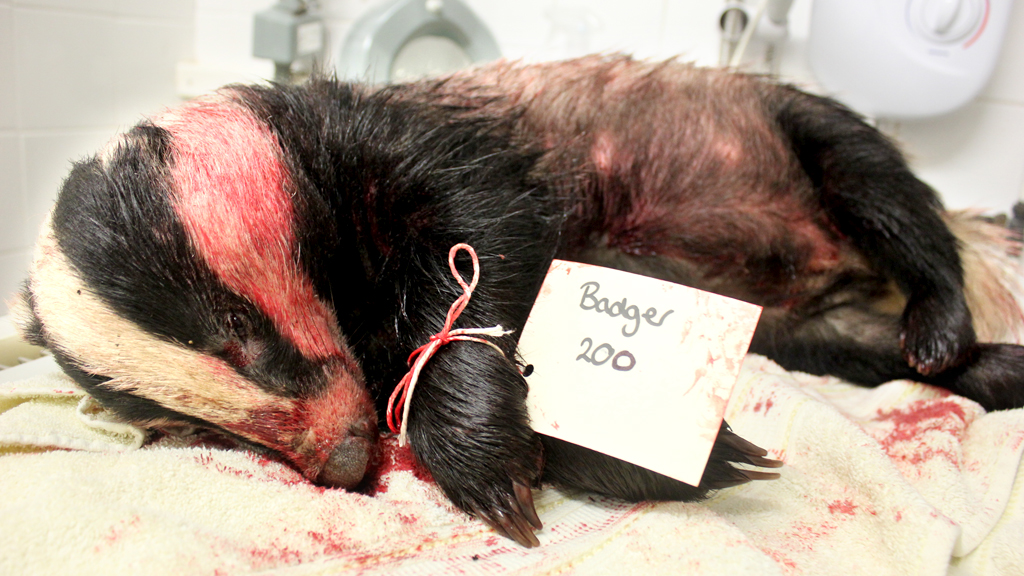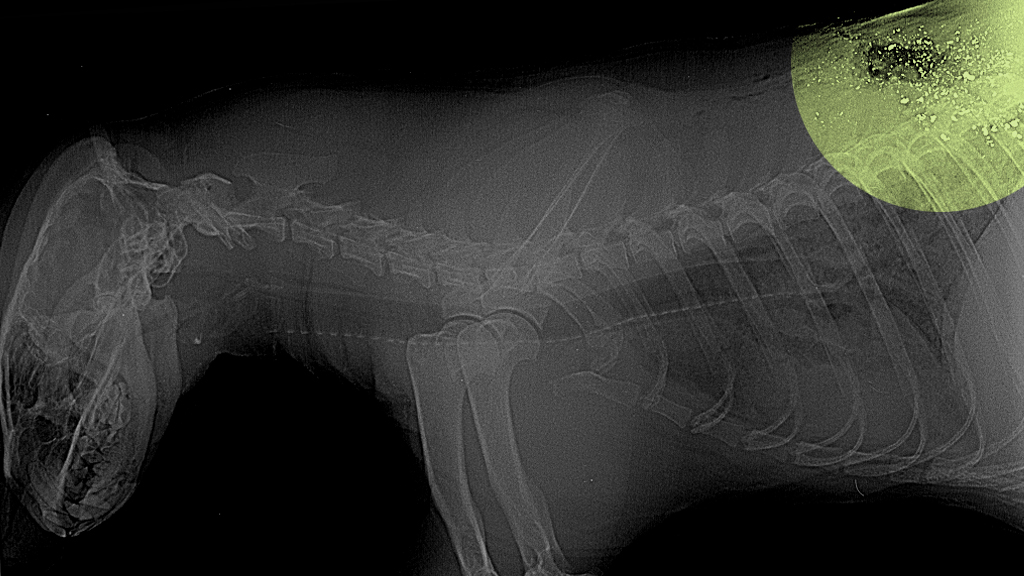Badger post mortems raise further questions over cull
Post mortems of badgers killed during a recent cull raise further questions about whether the policy is humane and effective, say wildlife experts. Channel 4 News has exclusive sight of the results.
Independent tests on two badgers, believed to have been shot in the cull zone during the government’s pilot badger cull, show neither tested positive for bovine TB – a fact campaigners say should embarrass Environment Secretary Owen Paterson, who claimed in 2013 that badgers targeted in the cull were, “miserable, emaciated and sick animals spewing out disease”.
The cull went ahead despite strong opposition from conservationists, scientists and some MPs, as part of efforts to tackle rising rates of bovine TB in cattle.
The independent post mortems relate to two badgers shot with high powered rifles during the cull in Somerset in 2013. Instead of being recovered by cull operatives, the carcasses were found by campaigners patrolling at night around the cull zone.
This one sad example may represent the suffering of many other animals who escaped or crawled off to die underground Dr James Yates, RSPCA
The images are distressing to look at – and would be whether the animals had been humanely killed or not.

However, according to the Department for Environment, Food and Rural Affairs (Defra), the success of the policy at controlling bovine TB depends on whether using marksmen to shoot free-ranging badgers is “effective and humane”.
The results show that one of the badgers was shot nowhere near the target area of the body stipulated in the cull licence and endured a long and presumably painful death.
“This one sad example may represent the suffering of many other animals who escaped or crawled off to die underground,” said Dr James Yates, chief veterinary officer with the RSPCA, who has seen the post mortem results.
Badgers in the cull were supposed to be shot side-on in the area of the heart and lungs.

However x-ray images of “badger 200” shows a high powered rifle round shattered on impact with the animal’s spine.
“The shot smashed his ribs, filled his chest with blood and damaged his spine,” said Dr Yates, “his heart and brain were undamaged, so this was far from a quick death.”
The second badger (badger “102”) recovered from the Somerset cull zone was shot in the correct area of the body – though at an angle.
The shot “destroyed” part of the animal’s heart. Dr Mark Sidworthy, a veterinary pathologist who carried out the post-mortems, concluded that he “would expect death following such an injury to be inevitable and immediate”.
Despite this, the campaigners who recovered the carcass claim it lived long enough to stray a short distance from the area where shooting was taking place.
Defra told Channel 4 News:
“We have had no evidence presented to us about these two badgers to suggest that they were shot as part of the pilot culls. The Independent Expert Panel report will assess the safety, humaneness and effectiveness of controlled shooting.”
Police visit
Though Defra maintains “badger 102” was found in an area of the cull zone where shooting wasn’t happening, there is evidence the authorities went to great lengths to try and recover its body.
Adrian Coward is an independent ecologist who agreed to store the carcass found by campaigners in what they say was the cull zone. He told Channel 4 News about a visit from a senior officer from Avon and Somerset Police:
“He said the likelihood was that I’d be charged and arrested if I didn’t release the badger, and I said ‘you tell me what you’re going to charge me with, and I’ll make a decision’, and they didn’t come back.
“They talked about all sorts of nefarious acts like the animal byproducts regulations and government samples, and goodness knows what else.
“Fortunately I know a little bit about the law and I knew that they didn’t really have anything to pin on me.”
Examinations of both badgers also showed they were in good condition and TB tests confirmed no disease was present.
Wasted lives?
The post mortems were carried out at the request of Secret World Wildlife Rescue in Somerset. The results were then passed on to the Independent Expert Panel on badger culling set up by Defra.
Anti-cull campaigners say the post mortem evidence is another clear sign that the culling policy has failed: “[This is] clear evidence of the kind of brutality inflicted on badgers by a self-interested industry and its friends in government,” said Dominic Dyer, CEO of the Badger Trust.
“It is not clear if these animals were included in the official tally of cull victims, but the lives of all of them were utterly wasted in the attempt to prove the unprovable – that free shooting would be humane and effective,” he said.
FactCheck: the badger cull - what we know and what we don't know
If badgers are suffering in the cull – it must be viewed in context with the suffering TB causes cattle, and their farmers’ lives and livelihoods. The National Farmers Union are unwilling to comment on the humaneness of the cull until an independent report into its effectiveness has been published.
But Somerset cattle farmer James Small maintains control of TB in wildlife is essential: “Burying your head in the sand with this disease simply won’t work. We need to tackle it in cattle and in wildlife.”
The images are likely to be the only ones we ever see of the badgers targeted by the government’s bovine TB control policy.
A report by Independent Expert Panel into whether the pilot culls in Gloucestershire and Somerset were humane and effective was due to be published at the end of February, but Defra told Channel 4 News: “The panel has not submitted its report to ministers”.